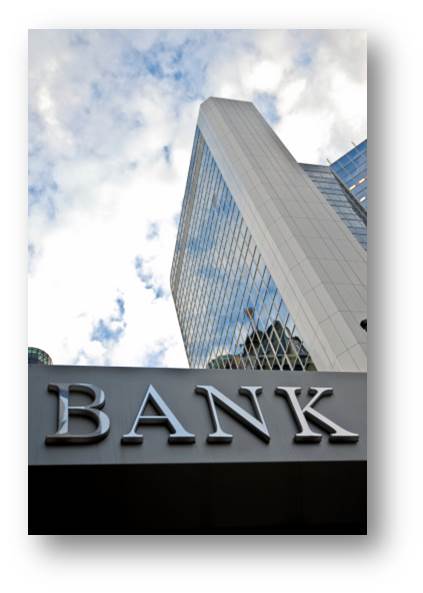Financial Services

By: Mike Horrocks Experian has announced a new agreement with Finagraph, a best-in-class automated financial intelligence tool provider, to provide the banking industry with software to evaluate small business financials faster. Loan automation is key in pulling together data in a meaningful manner and this bank offering will provide consistent formatted financials for easier lending assessment. Finagraph’s automated financial intelligence tool delivers advanced analytics and data verification that presents small business financial information in a consistent format, making it easier for lenders to understand the commercial customer’s business. Experian’s portfolio risk management platform addresses the overall risks and opportunities within a loan portfolio. The company’s relationship lending platform provides a framework to automate, integrate and streamline commercial lending processes, including small and medium-sized enterprise and commercial lending. Both data-driven systems are designed to accommodate and integrate existing bank processes saving time which results in improved client engagement “Finagraph connects bankers and businesses in a data-driven way that leads to better insights that strengthens customer relationships,” said John Watts, Experian Decision Analytics director of product management. “Together we are helping our banking clients deliver the trusted advisor experience their business customers desire in a new industry-leading way.” “The lending landscape is rapidly changing. With new competitors entering the space, banks need innovative tools that allow them to maintain an advantage,” said James Walter, CEO and President of Finagraph. “We are excited about the way that our collaboration with Experian’s Baker Hill Advisor gives banks an edge by enabling them to connect with their clients in a meaningful way. Together we are hoping to empower a new generation of trusted advisors.” Learn more about our portfolio risk management and lending solutions and for more information on Finagraph please visit www.finagraph.com.

Deposit accounts for everyone Over the last several years, the Consumer Financial Protection Bureau (CFPB) has, not so quietly, been actively pushing for changes in how banks decision applicants for new checking accounts. Recent activity by the CFPB is accelerating the pace of this change for those managing deposits-gathering activities within regulated financial institutions. It is imperative banks begin adopting modern technology and product strategies that are designed for a digital age instead of an age before the internet even existed. In October 2014, the CFPB hosted the Forum On Access To Checking Accounts to push for more transparent account opening procedures, suggesting that bank’s use of “blacklists” that effectively “exclude” applicants from opening a transaction account are too opaque. Current regulatory trends are increasingly signaling the need for banks to bring checking account originations strategies into the 21st century as I indicated in Banking in the 21st Century. The operations and technology implications for banks must include modernizing the approach to account opening that goes beyond using different decision data to do “the same old thing” that only partially addresses broader concerns from consumers and regulators. Product features attached to check accounts, such as overdraft shadow limits, can be offered to consumers where this liquidity feature matches what the customer can afford. Banking innovation calls for deposit gatherers to find more ways to approve a basic transaction account, such as a checking account, that considers the consumer’s ability to repay and limit approving overdraft features for some checking accounts even if the consumer opts in. This doesn’t mean banks cannot use risk management principles in assessing which customers get that added liquidity management functionality attached to a checking account. It just means that overdraft should be one part of the total customer level exposure the bank considers in the risk assessment process. The looming regulatory impacts to overdraft fees, seemingly predictable, will further reduce bank revenue in an industry that has been hit hard over the last decade. Prudent financial institutions should begin managing the impact of additional lost fee revenue now and do it in a way that customers and regulators will appreciate. The CFPB has been signaling other looming changes for check account regulations, likely to accelerate throughout 2015, and portend further large impacts to bank overdraft revenue. Foreshadowing this change are the 2013 overdraft study by the CFPB and the proposed rules for prepaid cards published for commentary in December 2014 where prepaid account overdraft is “subject to rules governing credit cards under TILA, EFTA, and their implementing regulations”. That’s right, the CFPB has concluded overdraft for prepaid cards are the same as a loan falling under Reg Z. If the interpretation is applied to checking account debit card overdraft rules, it would effectively turn overdraft fees into finance charges and eliminate a huge portion of remaining profitability for banks from those fees. The good news for banks is that the solution for the new deposits paradigm is accomplished by bringing retail banking platforms into the 21st century that leverage the ability to set exposure for customers at the client level and apportioned to products or features such as overdraft. Proactively managing regulatory change, that is predictable and sure to come, includes banks considering the affordability of consumers and offering products that match the consumer’s needs and ability to repay. The risk decision is not different for unsecured lending in credit cards or for overdraft limits attached to a checking account. Banks becoming more innovative by offering checking accounts enabling consumers more flexible and transparent liquidity management functionality at a reasonable price will differentiate themselves in the market place and with regulatory bodies such as the CFPB. Conducting a capabilities assessment, or business review, to assess product innovation options like combining digital lines of credit with check accounts, will inform your business what you should do to maintain customer profitability. I recommend three steps to begin the change process and proactively manage through the deposit industry regulatory changes that lay ahead: First, assess the impacts of potential lost fees if current overdraft fees are further limited or eliminated and quantify what that means to your product profitability. Second, begin designing alternative pricing strategies, product offerings and underwriting strategies that allow you to set total exposure at a client level and apportion this exposure across lending products that includes overdraft lines and is done in a way that it is transparent to your customers and aligns to what they can afford. Third, but can be done in parallel with steps one and two, begin capability assessments of your financial institution’s core bank decision platform that is used to open and manage customer accounts to ensure your technology is prepared to handle future mandatory regulatory requirements without driving all your customers to your competitors. It is a given that change is inevitable. Deposit organizations are well served to manage this current shift in regulatory policy related to checking account acquisitions in a way consistent with guaranteeing your bank’s competitive advantage. Banks can stay out front of competitors by offering transparent and relevant financial products consumers will be drawn to buy and can’t afford to live without! Thank you for following my blog and insights in DDA best practices. Please accept my invitation to participate in a short market study. Click here to participate. Participants in this 5 minute survey will receive a copy of the results as a token of appreciation.

By: Scott Rhode This is the third and last of a three-part blog series focused on the residential solar market looking at; 1) the history of solar technology, 2) current trends and financing mechanisms, and finally 3) overcoming market and regulatory challenges with Experian’s help. As we’ve discussed in the two previous blogs, the residential solar industry in the US has experienced tremendous growth and much of that growth is attributed to financing. As the financing offers continue to evolve and mature, there are challenges that the industry faces. The first, and most obvious challenge, is that the Solar Investment Tax Credit is set to expire on December 31st, 2016. (To be clear, the credit is not eliminated on Dec. 31, 2016, it is simply planned to be reduced to 10%) Given the state of affairs in Washington, it is unlikely that the tax credit will get extended. This is unfortunate since this tax credit has been a catalyst for investment in this industry, greatly increasing affordability and adoption from the public. Once this incentive expires, the solar companies will need to acquire capital from more traditional sources (Debt markets, securitization, or other third party financing) to fund their growth since the Tax Equity community may no longer be willing to invest. In addition, the expiration of the credit means that panel manufactures must find ways to reduce the cost of production and that finance and installation companies must lower their customer acquisition cost since they are unsustainable in a post-ITC world. A benefit of moving towards other means of funding is that the sophistication level of pre-screening, scoring, and portfolio management should improve dramatically. Today, the Tax Equity community drives all of the credit strategies and those strategies are actually holding solar companies back because of their simplicity. For example, most of the TE investors require that the customer have a 680 FICO score or better in order to get approval. They do not require a debt to income threshold to be met, nor do they look at other attributes or data points. This overly simplistic approach is meant to keep the TE investor out of difficult conversations of being in the “sub-prime” space; however, it greatly limits growth and it turns away good customers. Additionally, this approach does not consider the “essential use” nature of the product. When a customer becomes seriously delinquent, their panels get disconnected and their costs for energy go up more than the cost of their monthly lease payment. This ensures that, unlike an unsecured loan or credit card, the customer is more likely to pay this obligation since it is actually saving them money. This does not mean that the industry can approve everyone; however, it does mean that, with the right decisioning logic and scorecards, they can go much deeper into the credit pool without taking on huge risks. Another challenge for the industry is the shear rate of growth. There are new players in the market every day and even established firms have a hard time keeping up with the growth. This leaves the individual organization and industry at risk for missing critical compliance steps in their operations. Given that these financial instruments are long term in nature and more consumers are adopting this as a means to get solar, it is only a matter of time before the regulators start to look into the practices and operating processes to ensure that all of the applicable regulations are being followed. The industry, as a whole, needs to ensure that they spend a little money now shoring up their compliance instead of paying a hefty fine later. Finally, what happens at the end of the lease? Many of the large players have taken a conservative approach as to how they price the residual amount at the end of term; however, no one really knows what these assets will be worth in 20 years. While many of the panel manufacturers warrant performance for 25, many panels have a shelf-life of 40 years, so how will consumers and the industry behave? What happens if there is a technological breakthrough in 10 years and those old panels are obsolete? At the moment, the industry’s answer to these questions is to set a very low residual which carries risk. Being too conservative here means that your customer’s payment is higher than it needs to be, pricing yourself out of certain markets where the cost of power is less than 20 cents / kwh. As the lease product continues to mature, more focus and emphasis on residual pricing will need to take place to find the right balance for the Consumer and the finance company. It should be said that while there are risks associated with this industry, all markets and new financing products carry risks. The goal of this particular blog is to highlight some of the larger risks that this industry faces. As these are identified, it is incumbent on the industry and partners of the industry to mitigate these risks so that consumers can continue to realize the power of solar. To close this series, I would be remiss if I didn’t offer up Experian’s Global Consultancy solutions to help address the challenges that the industry faces. Our knowledge of best practices in the financial services industry allows us to help those companies in the solar market grow originations responsibly, meet their regulatory requirements, and manage their long term risks with customers. While we cannot solve the funding issues, we can work with organizations and the tax equity community to educate them on the power of decisioning beyond a simple “one-size fits all” score. In addition, our products and data allow for flexibility and certainty, giving the industry an edge in acquiring new customers in a more efficient and less expensive manner. Finally, we can help provide advice and best practices in decisioning, risk management, and regulatory compliance so that the industry can continue to grow and thrive. All in all, we are advocates for the industry and can bring tremendous expertise and experience to help ensure continued success. Solar Financing – The current and future catalyst behind the booming residential solar market (Part II) Solar Financing — The current and future catalyst behind the booming residential solar market (Part I)

By: Mike Horrocks I was raised in an underbanked home! I have known this for a long time, but it feels great to say it and be proud of it. I was raised in Neola, Utah, a small cattle ranching community of at the time 500 or so people. I don’t recall as a kid ever feeling poor or on the edge financially, in fact it was quite the opposite. When I was a freshman in college I got my own banking accounts and my first major credit card that gave cash back, it all just seemed normal. I recall showing my dad my new found financial life. The concept of getting cash back for purchases was something he wanted in on. He made the call to get his own card and within minutes the representative on the other end of the call asked if I was willing to co-sign for my dad because he did not have a thick enough credit file. At this point of my dad’s life, he had developed and sold a couple of businesses, bought and managed a successful angus cattle ranch - but he had done most of it in cash and so he was “off the grid”. When I co – signed for my dad, it hit me, in terms of the banking system that I was studying at the university, we were an underbanked family! So what are the lessons learned here for a banker today: Underbanked does not equal poor. I never felt poor, the family business was going great, and my dad was always able to meet any obligation or need for the ranch and us kids. Bankers need to know their customers. When my dad did need access to more capital, there was a great banker at Zions Bank that knew my dad and stood by him even though the traditional file was thin. So know your customers by all means (traditional credit, alternative data, etc.) Don’t forget the family. By this I mean the associated products and what they can mean to the overall customer picture and relationship. Know what risks and opportunities are there as you try to optimize the relationship. If you want to read some more, American Banker just published a great set of articles on including consumers and how to retain them - it is worth a quick review. Don’t let great customers like my dad go through your business development net. Attract them, nurture them and build great relationships with them.

The evolution of identity verification Knowing who you are doing business with isn’t just a sound business practice to protect your bottom line. In many cases, it also is a legal requirement. Identity verification techniques have been evolving over the past few years to meet business priorities beyond fraud prevention, including customer experience, operational costs and regulatory compliance. We recently wrote about the challenges of customer authentication on mobile devices to meeting new business priorities. Fraud prevention tools have responded to these shifting priorities. While extremely fast and very accurate at detecting fraud, they also: Are less invasive to customers Provide a strong return on investment Ensure consistency in compliance and audit Listen to what Matt Ehrlich, Experian fraud and identity director of product management, has to say about how verification techniques have changed: Download our fraud prevention perspective paper to gain more insight on how you can prepare your business.

By: Scott Rhode This is the second of a three-part blog series focused on the residential solar market looking at; 1) the history of solar technology, 2) current trends and financing mechanisms, and finally 3) overcoming market and regulatory challenges with Experian’s help. Lets discuss the current trends in solar and, more importantly, the mechanisms used to finance solar in the US residential market. As I discussed in the last blog, the growth in this space has been astronomical. To illustrate this growth, there was a recent article in The Washington Post by Matt McFarland, highlighting that solar-related jobs are significantly outpacing the rest of labor market in terms of year over year growth. The article states that since 2010 the number of solar-related jobs has doubled in the US, bring the total number of jobs in this industry to 173,807. While this is still smaller in comparison to other sectors of our economy, it underscores how much growth has occurred in a short amount of time. So what is driving this explosive growth? There are a few factors that should be considered; however, in the residential solar market, financing, is the main catalyst. As you might expect, there are a variety of financial products in the market giving the consumer lots of choices. First, there are traditional loans like home improvement loans, home equity loans, or energy efficiency loans offered by a bank, credit union, or specialty finance company. For homeowners that do not choose to secure their loan against their property, there are a variety of specialty lenders that will offer long-term, unsecured loans that only file a UCC against the panels themselves. For these types of offerings, some specialty lenders will even have special credit plans for the 30% Solar Investment Tax Credit so that the homeowner can have a deferred interest plan with the expectation that once they get the tax credit from the federal government, they will pay off the special plan and all of the deferred interest will be waived. If the customer does not pay in full, the plan rolls to their regular loan plan and the customer has a higher cost of financing. Second, there is a lease product which offers zero to little down and a monthly payment that is less than the savings that the homeowner will experience on their utility bill. Of all the financing options, the lease has been the biggest driver of growth since it offers an inexpensive, no-hassle way to get all the benefits of going solar without breaking the bank. What is unusual to most people that are unfamiliar with this concept is the term of the lease, which is typically 20 years. However, when you consider that most manufacturers warrant their panels for 25 and many have a usable life of 40 years, this term does not seem all that unusual. The benefits of this program look something like this: The homeowner has an average electric utility bill of $350 / month A solar company quotes a customer a savings of $200 / month in the form of a net metering energy credit, so their bill after solar is now $150 / month The lease payment for the installed solar array, metering equipment, and monitoring software is $150 / month The homeowner’s net saving is an average of $50 / month with nothing out of pocket Over the life of the lease, energy prices will increase which will mean more savings over time so long as there are not escalators in the contract that exceed the increase in energy prices The lessor “owns” the equipment and is responsible for maintenance, performance, and insurance With this product comes complexity. Many companies offering this program do not have the cash or the appetite to take on massive debt, so they partner with Tax Equity investors to make this transaction possible. Because of the 30% ITC and accelerated depreciation, this transaction is very favorable for a Tax Equity investor like Google, US Bank, or Bank of America Merrill Lynch. There are a number of structures they can use; however, the Sale-Leaseback structure is the easiest and most efficient way to fund the transaction. While this is not “known” to the end customer, it is important because the Tax Equity Investor effectively owns the asset and has the final say in setting credit policy. This transaction does require that the developer have a stake as well; however, many of the developers go to the debt market for “back leverage” on their stake so that they can reduce the impact to their balance sheet. This complexity carries a cost, as the cost of capital is higher than most traditional loan products from established financial services firms. That said, the fact that the lease allows the customer to monetize the tax credit and accelerated depreciation in the amount financed, balances out the higher costs of capital. In the next blog we will touch more on the challenges this product, in particular, has in the market. Last, but not least, there is another mechanism gaining popularity in the market. This concept is known as community solar. One of the obstacles of the lease and Tax Equity arrangement is that the lease is only available to single family residence homeowners and, if they have multiple homes, only the homeowner’s primary residence. That means that people who rent, own a condo, own a vacation home, or own a small business do not qualify for this type of lease. As a result, community solar has become a great option. With community solar, the panels are put in an ideal location for maximum exposure to the sun and they often produce 10-15% more power than panels on a rooftop. Portions of this solar farm can be sold, rented, or sublet to consumers regardless of their living situation. As the panels produce electricity, that power gets sold to the local utility and the customer gets money from that utility that shows up as a credit on their next bill. In this structure, the customer is not required to put money down in most cases and they are signing up for a specific term. Like a rooftop lease, this structure often has a Tax Equity investor that funds the project. Again, this allows them to take the 30% ITC and accelerated depreciation which, in turn, gets monetized and lowers the costs of construction. In the final installment of this blog series, I will discuss some of the challenges that this market faces as the ITC expiration date approaches and the market becomes more mature. Leasing is driving the market, so if the ITC does not get renewed, the market will need to have a plan in place to find other innovative ways to keep solar affordable so more consumers can realize the benefits of going solar. Solar Financing — The current and future catalyst behind the booming residential solar market (Part 1)

Customer experience strategies for success Sometimes it’s easier to describe something as the opposite of something else. Being “anti-” something can communicate something meaningful. Cultural movements in the past have taken on these monikers: consider the “anti-establishment” or “anti-war” movements. We all need effective anti-virus protection. And there are loads of skin products marketed as “anti-aging”, “anti-wrinkle”, or “anti-blemish.” But when you think about a vision for the customer experience that your company aspires to deliver, this approach of the “anti-X” falls flat. Would you want to aspire to basically “not stink?” Would that inspire you and your team to run through walls to deliver on that grand aspiration? Would it motivate customers to stick with you, buy more of what you sell, and tell others about you? I think not…But it sure seems like many out there indeed do aspire to “not stink.” Sure, there are great companies out there who have a set a high standard for customer experience, placing it at the center of their strategies and their success. Some, like Zappos, started that way from the beginning. Others, like The Ritz-Carlton, realized that they had lost their way and made the commitment to do the hard work of reaching and sustaining excellence. On the other hand, there are hundreds of firms who have a weak commitment to or even understanding of the importance of customer experience to their strategy and performance. Their leaders may give lip service or just pay attention for a few days or hours following the release of reports from leading analysts and firms. They may have posters and slogans that talk about putting the customer first or similar platitudes. These companies probably even have talented and passionate professionals working tirelessly to improve the customer experience in spite of the fact that nobody seems to care much. What these firms lack is a clear customer experience strategy. As nature abhors a vacuum, customers and employees are free to infer or just guess at it. Focusing on customer experience only when a report comes out – and paying special attention only when weak results put the firm near the bottom of the ranking leads people to conclude that all that really matters is to “not stink.” In other words, don’t stand out for being bad…but don’t worry much about being good as it is not important to the company’s strategy or results. I think that this “don’t stink” implicit strategy helps explain a fascinating insight from a Forrester survey in 2013: “80% of executives believe their company is delivering a superior customer experience, yet in 2013 only 8% of companies surveyed received a top grade from their customers.” Many leaders simply have not invested the energy and commitment necessary to define a real customer experience vision that reflects a deep understanding of the role that it plays in the company’s strategy. Beyond setting that vision, there is a big and sustained commitment required to deliver on the vision, measure results, and continuously adjust as customer needs evolve. Like all journeys, a great customer experience starts with one step. Establishing a customer experience strategy is the first one – and “don’t stink” simply stinks as a strategy. Download our recent perspective paper to learn how exceptional customer experience can give companies the competitive edge they need in a market where price, products and services can no longer be a differentiator.

By: Mike Horrocks Managing your portfolio can be a long and arduous process that ties up your internal resources but without it, there’s an increase of additional risk and potential losses. The key is to use loan automation to pull together data in a meaningful manner and go from a reactive to proactive process that can: Address the overall risks and opportunities within your loan portfolio Get a complete view of the credit and operational risk associated with a credit relationship or portfolio segment Monitor and track actionable steps by leveraging both internal and external data Watch how to avoid the 5 most common mistakes in loan portfolio management to help you reduce overall risk, but also identify cross sell and upsell opportunities. With a more automated process your lending staff can focus on bringing in new business rather than reacting to delinquencies and following up on credit issues.

There are two sides to every coin and in banking the question is often to you want to chase the depositor of that coin, or lend it out? Well the Federal Reserve’s decision to hold interest rates at record lows since the economic downturn gave the banks’ in the United States loan portfolios a nice boost from 2010-2011, but the subsequent actions and banking environment resulted in deposit growth outpacing loans – leading to a marked reduction in loan-to-deposit ratios across banks since 2011. In fact currently there is almost $1.30 in deposits for every loan out there today. This, in turn, has manifested itself as a reduction in net interest margins for all U.S. banks over the last three years – a situation unlikely to improve until the Fed hikes interest rates. Additionally, the banks’ have found that while they are now holding on to more of these deposits that additional regulations in the form of the CFPB looking to evaluate account origination processes, Basel III Liquidity concerns, CCAR and CIP & KYP have all made the burden of holding these deposits more costly. In fact the CFPB suggests four items they believe will improve financial institution’s checking account screening policies and practices: Increase the accuracy of data used from CRA’s Identify how institutions can incorporate risk screening tools while not excluding potential accountholders unnecessarily Ensure consumers are aware and notified of information used to decision the account opening process Ensure consumers are informed of what account options exist and how they access products that align with their individual needs Lastly, to add to this already challenging environment, technology has switched the channel of choice to your smartphone and has introduced a barrage of risks associated with identity authentication – as well as operational opportunities. As leaders in retail banking and in addressing the needs of your customers, I would like to extend an invitation on behalf of Experian for you to participate in our latest survey on the changing landscape of DDA opportunities. How are regulations changing your product set, what role does mobile play now and in the future, and what are your top priorities for 2015 and beyond? These are just a few of the insights we would like to gain from experts such as you. To access our survey, please click here. Our brief survey should take no more than seven minutes to complete and your insights will be highly valued as we look to better support you and your organization’s demand product needs. Our survey period will close in three weeks, so please respond now. As a sign of our appreciation for your insights, we will send all participants an anonymous aggregation of the responses so that you can see how others view the retail banking marketplace. So take advantage of this chance to learn from your peers and participate in this industry study and don’t leave your strategy to a flip of a coin.

This is the second post in a three-part series. Imagine the circumstances of a traveler coming to a never before visited culture. The opportunity is the new sights, cuisine and cultural experiences. Among the risks is the not before experienced pathogens and the strength of the overall health services infrastructure. In a similar vein, all too frequently we see the following conflict within our client institutions. The internal demands of an ever-increasing competitive landscape drive businesses to seek more data; improved ease of accessibility and manipulation of data; and acceleration in creating new attributes supporting more complex analytic solutions. At the same time, requirements for good governance and heightened regulatory oversight are driving for improved documentation and controlled access, all with improved monitoring and documented and tested controls. As always, the traveler/businessman must respond to the environment, and the best medicine is to be well-informed of both the perils and the opportunities. The good news is that we have seen many institutions invest significantly in their audit and compliance functions over the past several years. This has provided the lender with both better insights into its current risk ecosystem and the improved skill set to continue to refine those insights. The opportunity is for the lender to leverage this new strength. For many lenders, this investment largely has been in response to broadening regulatory oversight to ensure there are proper protocols in place to confirm adherence to relevant rules and regulations and to identify issues of disparate impact. A list of the more high-profile regulations would include: Equal Credit Opportunity Act (ECOA) — to facilitate enforcement of fair lending laws and enable communities, governmental entities and creditors to identify business and community development needs and opportunities of women-owned, minority-owned and small businesses. Home Mortgage Disclosure Act (HMDA) — to require mortgage lenders to collect and report additional data fields. Truth in Lending Act (TLA) — to prohibit abusive or unfair lending practices that promote disparities among consumers of equal creditworthiness but of different race, ethnicity, gender or age. Consumer Financial Protection Bureau (CFPB) — evolving rules and regulations with a focus on perceptions of fairness and value through transparency and consumer education. Gramm-Leach-Bliley Act (GLBA) — requires companies to give consumers privacy notices that explain the institutions’ information-sharing practices. In turn, consumers have the right to limit some, but not all, sharing of their information. Fair Debt Collections Practices Act (FDCPA) — provides guidelines for collection agencies that are seeking to collect legitimate debts while providing protections and remedies for debtors. Recently, most lenders have focused their audit/compliance activities on the analytics, models and policies used to treat consumer/client accounts/relationships. This focus is understandable since it is these analytics and models that are central to the portfolio performance forecasts and Comprehensive Capital Analysis and Review (CCAR)–mandated stress-test exercises that have been of greater emphasis in responding to recent regulatory demands. Thus far at many lenders, this same rigor has not yet been applied to the data itself, which is the core component of these policies and frequently complex analytics. The strength of both the individual consumer–level treatments and the portfolio-level forecasts is negatively impacted if the data underlying these treatments is compromised. This data/attribute usage ecosystem demands clarity and consistency in attribute definition; extraction; and new attribute design, implementation to models and treatments, validation and audit. When a lender determines there is a need to enhance its data governance infrastructure, Experian® is a resource to be considered. Experian has this data governance discipline within our corporate DNA — and for good reason. Experian receives large and small files on a daily basis from tens of thousands of data providers. In order to be sure the data is of high quality so as not to contaminate the legacy data, rigorous audits of each file received are conducted and detailed reports are generated on issues of quality and exceptions. This information is shared with the data provider for a cycle of continuous improvement. To further enhance the predictive insights of the data, Experian then develops new attributes and complex analytics leveraging the base and developed attributes for analytic tools. This data and the analytic tools then are utilized by thousands of authorized users/lenders, who manage broad-ranging relationships with millions of individuals and small businesses. These individuals and businesses then have rights to reproach Experian for error(s) both perceived and actual. This demanding cycle underscores the value of the data and the value of our rigorous data governance infrastructure. This very same process occurs at many lenders sites. Certainly, a similar level of data integrity born from a comprehensive data governance process also is warranted. In the next and final blog in this series, we will explore how a disciplined business review of an institution’s data governance process is conducted. Discover how a proven partner with rich experience in data governance, such as Experian, can provide the support your company needs to ensure a rigorous data governance ecosystem. Do more than comply. Succeed with an effective data governance program.

Opening a new consumer checking account in the 21st century should be simple and easy to understand as a customer right? Unfortunately, not all banks have 21st century systems or processes reflecting the fact that negotiable order of withdrawal (NOW) accounts, or checking accounts, were introduced decades ago within financial institutions and often required the consumer to be in person to open the account. A lot has changed and consumers demand simpler and transparent account opening processes with product choices that match their needs at a price that they’re willing to pay. Financial institutions that leverage modernized technology capabilities and relevant decision information have the best chance to deliver consumer friendly experiences that meet consumer expectations. It is obvious to consumers when we in the financial services industry get it right and when we don’t. The process to open a checking account should be easily understood by consumers and provide them with appropriate product choices that aren’t “one size fits all”. Banks with more advanced core-banking systems incorporating relevant and compliant decision data and transparent consumer friendly approval processes have a huge opportunity to differentiate themselves positively from competitors. The reality is that banking deposit management organizations throughout the United States continue to evolve check screening strategies, technology and processes. This is done in an effort to keep up with evolving regulatory expectations from the consumer advocacy regulatory bodies such as the Consumer Financial Protection Bureau (CFPB) and designed to improve transparency of checking account screening for new accounts for an increased number of consumers. The CFPB advocates that financial institutions adopt new checking account decision processes and procedures that maintain sound management practices related to mitigating fraud and risk expense while improving consumer transparency and increasing access to basic consumer financial instruments. Bank shareholders demand that these accounts be extended to consumers profitably. The CFPB recognizes that checking accounts are a basic financial product used by almost all consumers, but has expressed concerns that the checking account screening processes may prevent access to some consumers and may be too opaque with respect to the reasons why the consumer may be denied an account. The gap between the expectations of the CFPB, shareholders and bank deposit management organization’s current products and procedures are not as wide as they may seem. The solution to closing the gap includes deploying a more holistic approach to checking account screening processes utilizing 21st century technology and decision capabilities. Core banking technology and checking products developed decades ago leave banks struggling to enact much needed improvements for consumers. The CFPB recognizes that many financial institutions rely on reports used for checking account screening that are provided by specialty consumer reporting agencies (CRAs) to decision approval for new customers. CRAs specialize in checking account screening and provide financial institutions with consumer information that is helpful in determining if a consumer should be approved or not. Information such as the consumer’s check writing and account history such as closed accounts or bounced checks are important factors in determining eligibility for the new account. Financial institutions are also allowed to screen consumers to assess if they may be a credit risk when deciding whether to open a consumer checking account because many consumers opt-in for overdraft functionality attached to the checking account. Richard Cordray, the CFPB Director, clarified the regulatory agency’s position as to how consumers are treated in checking account screening processes within his prepared remarks at a forum on this topic in October 2014. “The Consumer Bureau has three areas of concern. First, we are concerned about the information accuracy of these reports. Second, we are concerned about people’s ability to access these reports and dispute any incorrect information they may find. Third, we are concerned about the ways in which these reports are being used.” The CFPB suggests four items they believe will improve financial institution’s checking account screening policies and practices: Increase the accuracy of data used from CRA’s Identify how institutions can incorporate risk screening tools while not excluding potential accountholders unnecessarily Ensure consumers are aware and notified of information used to decision the account opening process Ensure consumers are informed of what account options exist and how they access products that align with their individual needs Implementing these steps shouldn’t be too difficult to accomplish for deposit management organizations as long as they are fully leveraging software such as Experian’s PowerCurve customized for deposit account origination, relevant decision information such as Experian’s Precise ID Platform and Vantage Score® credit score combined with consumer product offerings developed within the bank and offered in an environment that is real-time where possible and considers the consumer’s needs. Enhancing checking account screening procedures by taking into account consumer’s life-stage, affordability considerations, unique risk profile and financial needs will satisfy expectations of the consumers, regulators and the financial institution shareholders. Financial institutions that use technology and data wisely can reduce expenses for their organizations by efficiently managing fraud, risk and operating costs within the checking account screening process while also delighting consumers. Regulatory agencies are often delighted when consumers are happy. Shareholders are delighted when regulators and consumers are happy. Reengineering checking account opening processes for the modern age results in a win-win-win for consumers, regulators and financial institutions. Discover how an Experian Global Consultant can help you with your banking deposit management needs.
Originally contributed by: Bill Britto Smart meters have made possible new services for customers, such as automated budget assistance and bill management tools, energy use notifications, and "smart pricing" and demand response programs. It is estimated that more than 50 million smart meters have been deployed as of July 2014. Utilities and customers alike are benefiting from these smart meter deployments. It is now obvious the world of utilities is changing, and companies are beginning to cater more to their customers by offering them tools to keep their energy costs lower. For example, several companies offer prepay to some of their customers who do not have bank accounts. For many of those "unbanked" customers, prepay could be the only way to sign up for a utility services. Understanding the value of prospects and the need to automate decisions to achieve higher revenue and curb losses is imperative to the utility. It is here where a decisioning solution, like PowerCurve OnDemand> can make a real difference for utility customers by providing modified decision strategies based on market dynamics, business and economic environments. Imagine what a best of class decision solution can do by identifying what matters most about consumers and business and by leveraging internal and external data assets to replace complexity with cost efficiency? Solutions like PowerCurve OnDemand deliver the power and speed-to-market to respond to changing customer demands, driving profitability and growing customer lifetime value - good for business and good for customers.

A new comarketing agreement for MainStreet Technologies’ (MST) Loan Loss Analyzer product with Experian Decision Analytics’ Baker Hill Advisor® product will provide the banking industry with a comprehensive, automated loan-management offering. The combined products provide banks greater confidence for loan management and loan-pricing calculations. Experian Decision Analytics Baker Hill Advisor product supports banks’ commercial and small-business loan operations comprehensively, from procuring new loans through collections. MST’s Loan Loss Analyzer streamlines the estimation and documentation of the Allowance for Loan and Lease Losses (ALLL), the bank’s most critical quarterly calculation. The MST product automates the most acute processes required of community bankers in managing their commercial and small-business loan portfolios. Both systems are data-driven, configurable and designed to accommodate existing bank processes. The products already effectively work together for community banks of varying asset sizes, adding efficiencies and accuracy while addressing today’s increasingly complex regulatory requirements. “Experian’s Baker Hill Advisor product-development priorities have always been driven by our user community. Changes in regulatory and accounting requirements have our clients looking for a sophisticated ALLL system. Working with MainStreet, we can refer our clients to an industry-leading ALLL platform,” said John Watts, Experian Decision Analytics director of product management. “The sharing of data between our organizations creates an environment where strategic ALLL calculations are more robust and tactical lending decisions can be made with more confidence. It provides clients a complete service at every point within the organization.” “Bankers, including many using our Loan Loss Analyzer, have used Experian’s Baker Hill® software to manage their commercial loan programs for more than three decades,” said Dalton T. Sirmans, CEO and MST president. “Bankers who choose to implement Experian’s Baker Hill Advisor and the MST Loan Loss Analyzer will be automating their loan management, tracking, reporting and documentation in the most comprehensive, user-friendly and feature-rich manner available.” For more information on MainStreet Technologies, please visit http://www.mainstreet-tech.com/banking For more information on Baker Hill, visit http://ex.pn/BakerHill

By: John Robertson I began this blog series asking the question “How can banks offer such low rates?” Exploring the relationship of pricing in an environment where we have a normalized. I outlined a simplistic view of loan pricing as: + Interest Income + Non-Interest Income Cost of Funds Non-Interest Expense Risk Expense = Income before Tax Along those lines, I outlined how perplexing it is to think at some of these current levels, banks could possibly make any money. I suggested these offerings must be lost leaders with the anticipation of more business in the future or possibly, additional deposits to maintain a hold on the relationship over time. Or, I shudder to think, banks could be short funding the loans with the excess cash on their balance sheets. I did stumble across another possibility while proving out an old theory which was very revealing. The old theory stated by a professor many years ago was “Margins will continue to narrow…. Forever”. We’ve certainly seen that in the consumer world. In pursuit of proof to this theory I went to the trusty UBPR and looked at the net interest margin results from 2011 until today for two peer groups (insured commercial banks from $300 million to $1 billion and insured commercial banks greater the $3 billion). What I found was, in fact, margins have narrowed anywhere from 10 to 20 basis points for those two groups during that span even though non-interest expense stayed relatively flat. Not wanting to stop there, I started looking at one of the biggest players individually and found an interesting difference in their C&I portfolio. Their non-interest expense number was comparable to the others as well as their cost of funds but the swing component was non-interest income. One line item on the UPBR’s income statement is Overhead (i.e. non-interest expense) minus non-interest income (NII). This bank had a strategic advantage when pricing there loans due to their fee income generation capabilities. They are not just looking at spread but contribution as well to ensure they meet their stated goals. So why do banks hesitate to ask for a fee if a customer wants a certain rate? Someone seems to have figured it out. Your thoughts?

By: Mike Horrocks A recent industry survey was published that called out the number one reason that lenders were dissatisfied or willing to go to another financial institution (and take their book of business with them) was not compensation. While, compensation is often thought of as the number one driver for this kind of change in your bench of lenders, it had much more to do with being able to serve customers efficiently. One of the key reasons that lenders were unhappy was that they were in a workflow and decisioning process where the lender could not close loans on time, putting stress on the loan officer's relationships and destroying borrower confidence. Thinking of my own experiences as a commercial lender, my interactions with the private bankers, branch managers, and lenders that served every kind of customer, I would absolutely have to agree with this study. Nothing is more disheartening then working on bringing in a client, and then having the process not give me a response in the time that my clients are expecting or that the completion is achieving. Automation in the process is the key. While lenders still will need to be engaged in the process and paying attention to the relationship, it can be significantly refocused to other parts of the business. This leads to benefits such as: Protecting the back office and the consistence of booking and servicing loans. Ensuring that the risk appetite is consistent for the institution for every deal. Growing a portfolio of loans that can and will adhere to sound portfolio management techniques. So how is your process supporting lenders? Are you automating to help in areas that give you a competitive advantage with robust credit scores, decision strategies or risk management solutions that are helping close deals quickly or are you requiring a process that is keeping them from bringing more customers (and profits) in the door? Henry Ford is credited to say, “Coming together is a beginning. Keeping together is progress. Working together is success.” Take a closer look at your lending process. Do you have the tools that help bring your lenders, your customers, and your organization together? If you don’t you may be losing some of your best talent for loan production at a time when you can least afford it.